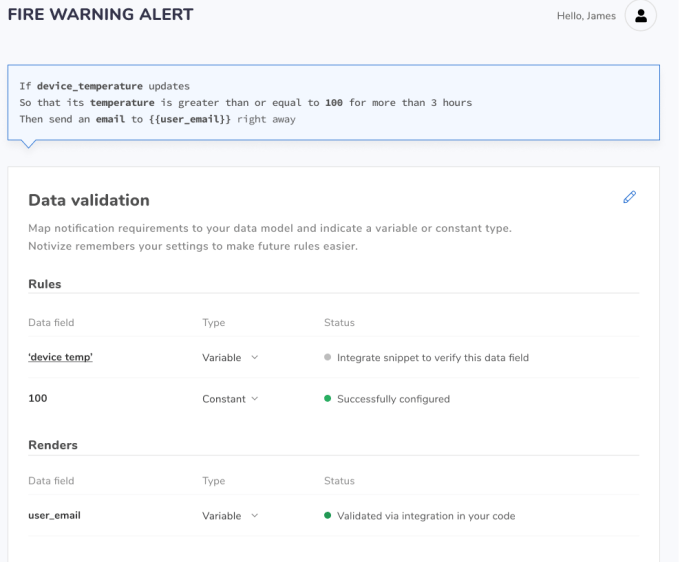Music
Trailers
DailyVideos
India
Pakistan
Afghanistan
Bangladesh
Srilanka
Nepal
Thailand
StockMarket
Business
Technology
Startup
Trending Videos
Coupons
Football
Search
Download App in Playstore
Download App
Best Collections
Technology

While Teams may be the focal point of Microsoftcurrent collaboration strategy these days, Yammer — the enterprise social network it acquired in 2012 for $1.2 billion — hasn&t been exactly left for dead.
In fact, Microsoft unveiled a complete redesign of the enterprise social network at last yearIgnite conference, offering up a new user interface based on MicrosoftFluent Design system, smart news feed recommendations, and tighter integration with Outlook, SharePoint and, of course, Teams.
To read this article in full, please click here
- Details
- Category: Technology Today
Read more: Microsoft looks to give Yammer a new lease of life; can it
Write comment (90 Comments)A year ago, Lyft submitted a report to the California Department of Motor Vehicles that summed up its 2018 autonomous vehicle testing activity in a single, short paragraph.
&Lyft Inc. did not operate any vehicles in autonomous mode on California public roads during the reporting period,& the letter read. &As such, Lyft Inc. has no autonomous mode disengagements to report.&
The 2019 data tells a different story. Lyft had 19 autonomous vehicles testing on public roads in California in 2019, according to data released earlier this week by the CA DMV. Those 19 vehicles, which operated during the reporting period of December 2018 to November 2019, drove nearly 43,000 miles in autonomous mode.
The report is the latest sign that Lyft is trying to ramp up its self-driving vehicle program known as Level 5.
The CA DMV, the agency that regulates autonomous vehicle testing on public roads in the state, requires companies to submit an annual report that includes data such as total AV miles driven and number of vehicles. It also requires companies to report&disengagements,& a term that describes each time a self-driving vehicle disengages out of autonomous mode either because its technology failed or a human safety driver took manual control for safety reasons.
Thatstill far below established AV developers such as Cruise and Waymo, which accumulated 831,000 and 1.45 million autonomous miles, respectively. And it makes up just a tiny sliver of the total autonomous miles racked up by the 36 companies that tested on public roads in 2019.
The total number of autonomous miles driven in 2019 rose 40%, to more than 2.87 million, thanks largely to a notable uptick in public on-road testing by Baidu, Cruise, Pony.ai, Waymo and Zoox. While the number of companies with testing permits grew to 60 in 2019, the percentage of companies actually testing on public roads fell to about 58%. In 2018, about 62% of the 48 companies that held permits tested on public roads.
Still, the report shows Lyft is doing more than partnering with autonomous vehicle companies like Aptiv . Lyft and Aptiv launched a robotaxi pilot in January 2018 in Las Vegas. The program, which puts Aptiv vehicles on Lyftride-hailing network, surpassed 100,000 rides this month. Human safety drivers are always behind the wheel and the vehicles do not drive autonomously in parking lots and hotel lobby areas.
LyftLevel 5 program — a nod to the SAE automated driving level that means the vehicle handles all driving in all conditions — was launched in July 2017. Today, Level 5 employs more than 400 people in the U.S., Munich and London.
Testing on public roads in California began in November 2018 with a pilot program in Palo Alto that provided rides to Lyft employees in Palo Alto. The pilot provided on-demand rides set on fixed routes, such as traveling between the Lyft office and Caltrain.
Since then, the company has expanded the scope and geography of the pilot. By late 2019, Lyft was driving four times more autonomous miles per quarter than it was six months prior.
Lyft is also testing on a dedicated closed-course track in East Palo Alto that it opened in November 2019. The company told TechCrunch it uses this facility, which can be changed to include intersections, traffic lights and merges, to test software prior to putting its vehicles on public roads.
- Details
- Category: Technology Today
Read more: Lyft ramps up self-driving program
Write comment (95 Comments)
Google has posted warnings and alerts targeting Microsoft Edge on several of its services' websites, including the Chrome Web Store add-on market, Google Drive, Gmail and the company's default search page, google.com.
It's not uncommon for Google to flag rival browsers with messages that recommend a user download Chrome to access the search company's services. In the past, while it was building its now-dominant position in the browser space, Google targeted Mozilla's Firefox and Microsoft's Internet Explorer (IE) with such pop-ups. At times, rival browser makers have also countered Google with similar you-should-really-switch-from-Chrome tactics.
To read this article in full, please click here
- Details
- Category: Technology Today
Read more: Google plugs for Chrome when Edge accesses search firm's services
Write comment (92 Comments)A new startup called Notivize aims to give product teams direct access to one of their most important tools for increasing user engagement — notifications.
The company has been testing the product with select customers since last year and says it has already sent hundreds of thousands of notifications. And this week, it announced that it has raised $500,000 in seed funding led by Heroic Ventures .
Notivize co-founder Matt Bornski has worked at a number of startups, including AppLovin and Wink, and he said he has &so many stories I can tell you about the time it takes to change a notification thatdeeply embedded in your stack.&
To be clear, Bornski isn&t talking about a simple marketing message thatpart of a scheduled campaign. Instead, he said that the &most valuable& notifications (e.g. the ones that users actually respond to) are usually driven by activity in an app.
For example, it might sound obvious to send an SMS message to a customer once the product they&ve purchased has shipped, but Bornski said that actually creating a notification like that would normally require an engineer to write new code.
&Therethe traditional way that these things are built: The product team specs out that we need to send this email when this happens, or send this SMS or notification when this happens, then the engineering team will go in and find the part of the code where they detect that such a thing has happened,& he said. &What we really want to do is give [the product team] the toolkit, and I think we have.&

So with Notivize, non-coding members of the product and marketing team can write &if-then& rules that will trigger a notification. And this, Bornski said, also makes it easier to &A/B test and optimize your copy and your send times and your channels& to ensure that your notifications are as effective as possible.
He added that companies usually don&t build this for themselves, because when they&re first building an app, it¬ a rational thing to invest your time and effort in when you&re just testing the market or you&re struggling for product market fit.& Later on, however, it can be challenging to &go in and rip out all the old stuff& — so instead, you can just take advantage of what Notivize has already built.
Bornski also emphasized that the company isn&t trying to replace services that provide the &plumbing& for notifications. Indeed, Notivize actually integrates with SendGrid and Twilio to send the notifications.
&The actual sending is not the core value [of what we do],& he said. &We&re improving the quality of what you&re paying for, of what you send.&
Notivize allows customers to send up to 100 messages per month for free. After that, pricing starts at $14.99 per month.
&The steady march of low-code and no-code solutions into the product management and marketing stack continues to unlock market velocity and product innovation,& said Heroic Ventures founder Michael Fertik in a statement. &Having been an early investor in several developer platforms, it is clear that Notivize has cracked the code on how to empower non-technical teams to manage critical yet complex product workflows.&
- Details
- Category: Technology Today
Read more: Notivize makes it easier for non-technical teams to optimize app notifications
Write comment (95 Comments)
Well, after what I&m sure was a hectic few days for the folks planning the Game Developers Conference in San Francisco, the team announced today that they have officially decided to cancel the event happening this March, saying in a blog post that they hoped they would be able to reschedule an event for &later in the summer.&
In recent days, nearly all of the eventtop corporate sponsors announced that they would not be sending employees to the event due to concerns surrounding coronavirus. Microsoft, Unity, Epic, Amazon, Facebook and Sony had all bowed out of the event. GDC statement did not reference the virus.
The company behind GDC detailed that they will be refunding conference and expo attendees in full, though a blog post details that the group hopes to host a GDC event later in the summer, noting, &We will be working with our partners to finalize the details and will share more information about our plans in the coming weeks.&
GDC is just the latest tech conference to be shuttered in the wake of worldwide concern surrounding the outbreak of coronavirus. Yesterday, Facebook announced it would be canceling the in-person component of its F8 conference and we have already seen the cancellation of GSMA‘s Mobile World Congress in Barcelona.
- Details
- Category: Technology Today
Read more: GDC 2020 has been canceled
Write comment (94 Comments)
There are plenty of accelerators aiming to sway young startups to join their ranks rather than apply to Y Combinator, but Pioneer‘s sell is a bit different.
First off, they are fully remote; founders selected to participate in the program chat with advisors via video chat. Second, Pioneer is largely looking at companies that aren&t companies yet, framing themselves as more of a &startup generator& than an accelerator that aims to help entrepreneurs outside Silicon Valley zero in on exactly what kind of startup they want to build.
Earlier this month, I wrote about the accelerator, which is helmed by former YC partner Daniel Gross .
My interview with Gross had some interesting longer bouts I didn&t have space to include, so I&m including the salient bits here. This interview has been edited for length and clarity.
TechCrunch: Remote work seems to have its challenges; how have you overcome some of the humps of being a remote accelerator?
Daniel Gross: My overall view is that remote can replace the majority of real-world interaction. But thereless inertia, if that makes sense, and so I think you can build real rapport and real relationships through a group video chat on the internet, but it will require much more thinking and effort around it than if you were just meeting up in the real world.
- Details
- Category: Technology Today
Read more: Pioneer founder Daniel Gross on bringing remote teams together
Write comment (100 Comments)Page 1331 of 1412

 20
20





